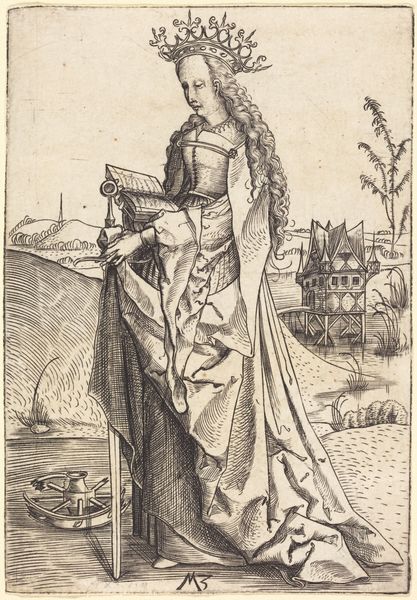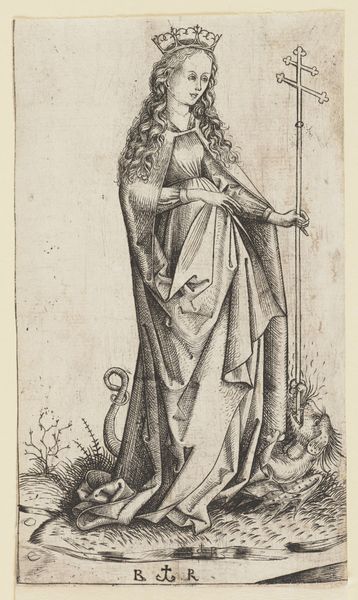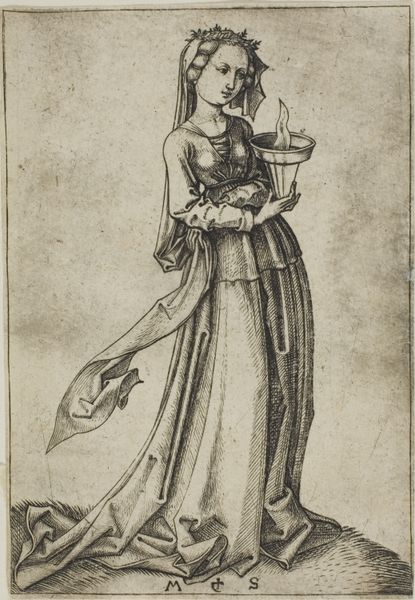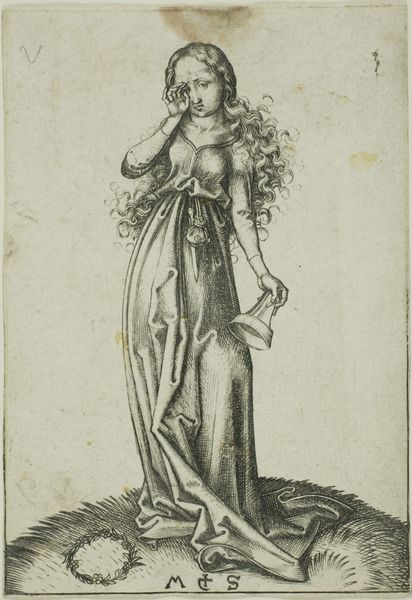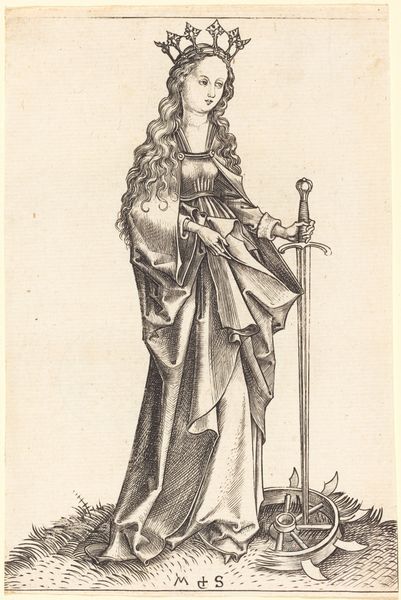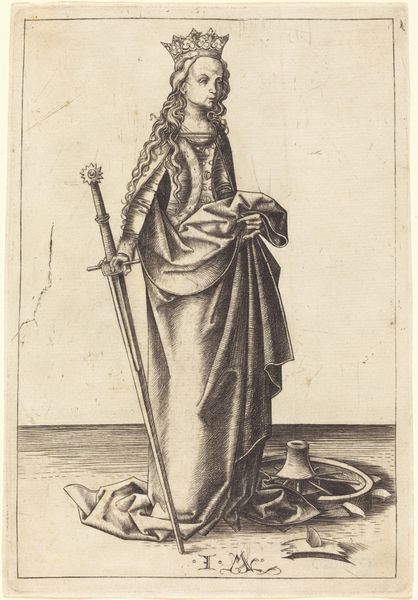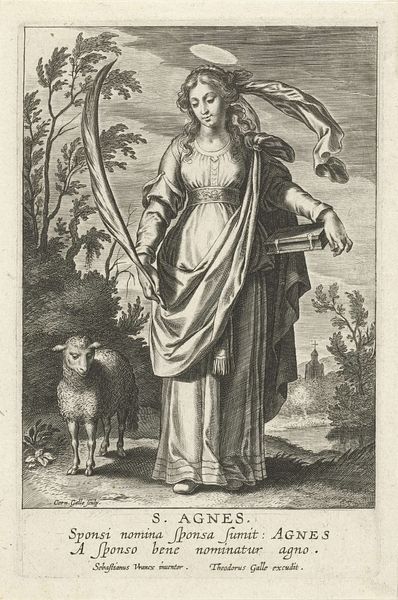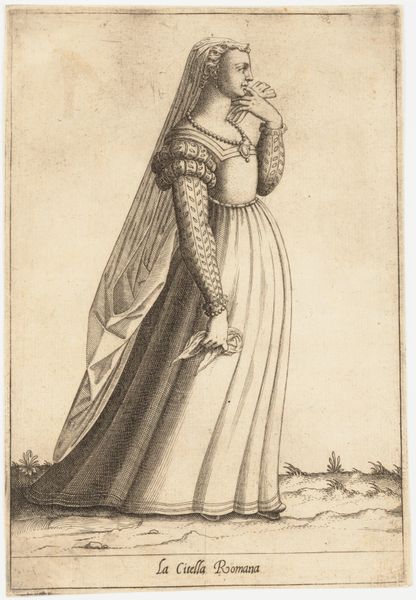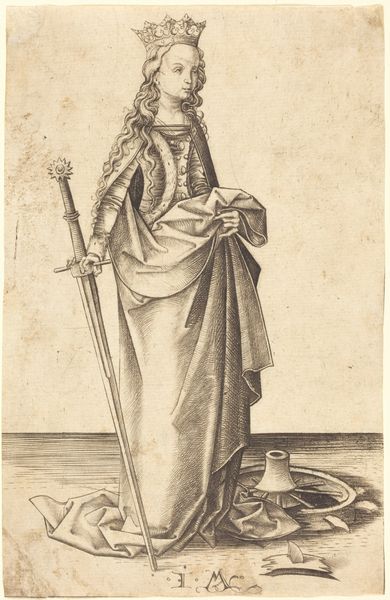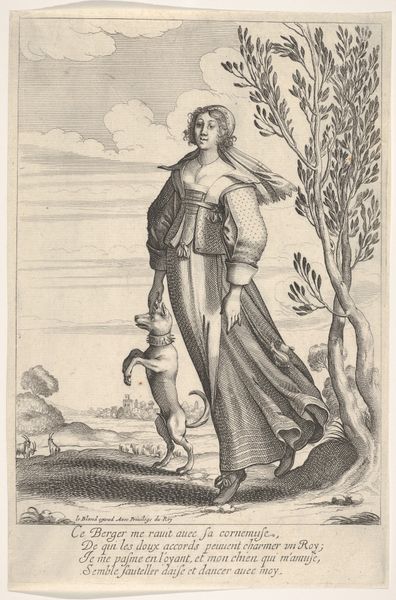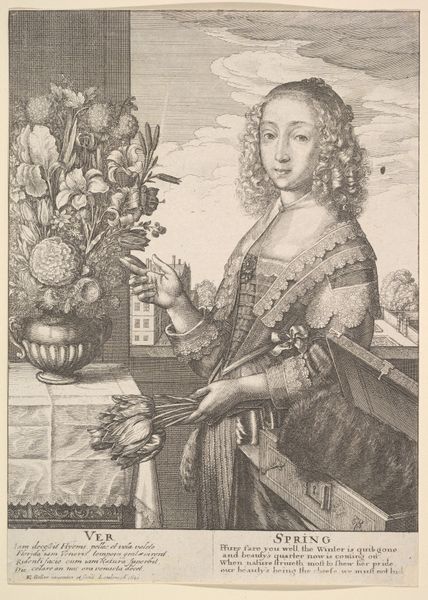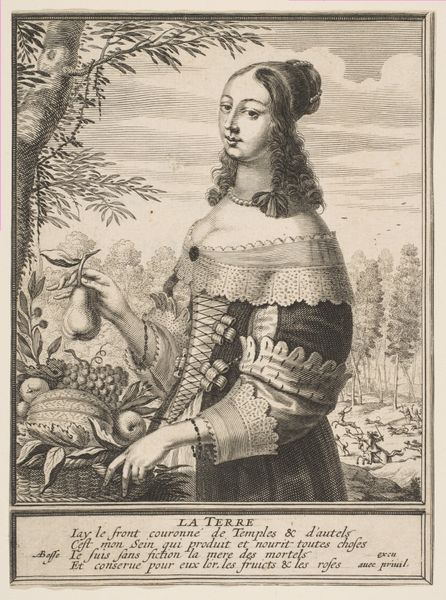
print, engraving
#
germany
# print
#
figuration
#
line
#
history-painting
#
engraving
Dimensions: 4 7/8 x 3 3/8 in. (12.38 x 8.57 cm) (image)
Copyright: Public Domain
Curator: Here we have a striking engraving from around the 15th century known as “St. Margaret.” It's currently part of the Minneapolis Institute of Art's collection. What strikes you first about it? Editor: The figure, without a doubt. There's a gravity and stoicism about her—as though she stepped straight out of an old dream, not quite human. There's something so severe in those precise, stark lines of the face. Curator: That severity is something found frequently during this period, a stark portrayal that highlights her role as a saint and historical figure. Margaret's iconography often includes the dragon at her feet, and the cross she wields –both symbolizing her triumph over evil. This work showcases an archetypal representation that was broadly circulated in various media. Editor: You're right, the dragon beneath her is amazing; more like a wooly sheep dog with attitude issues than some fire-breathing monster. What fascinates me most, beyond the cultural relevance, is this linear quality--this density of lines that define and almost imprison the subject. It really grabs the eye, doesn't it? Curator: The technique highlights the artistic conventions prevalent at the time. Printmaking, particularly engravings like this, served as a vital tool for disseminating religious imagery to a broader audience, reinforcing social norms and religious piety. The detail, achievable with engraving, lent itself to complex iconographic programs. Editor: Almost like an early version of mass media. One imagines that folks who didn't get a chance to behold masterpieces up close were familiar with these stories due to affordable replications and representations, and this allowed society to develop their own thoughts about it. To look upon St. Margaret is to be present at an old moment of the zeitgeist that continues to hold us today. Curator: Precisely. What the artist captured so beautifully was this ability of art to disseminate ideologies and spiritual values; an extremely important notion for that period. This artwork speaks to how imagery helped influence devotion, cultural ideas, and public engagement. Editor: Agreed, an artwork such as this is definitely more than meets the eye, both aesthetically, and when put in conversation with cultural discourse!
Comments
No comments
Be the first to comment and join the conversation on the ultimate creative platform.
